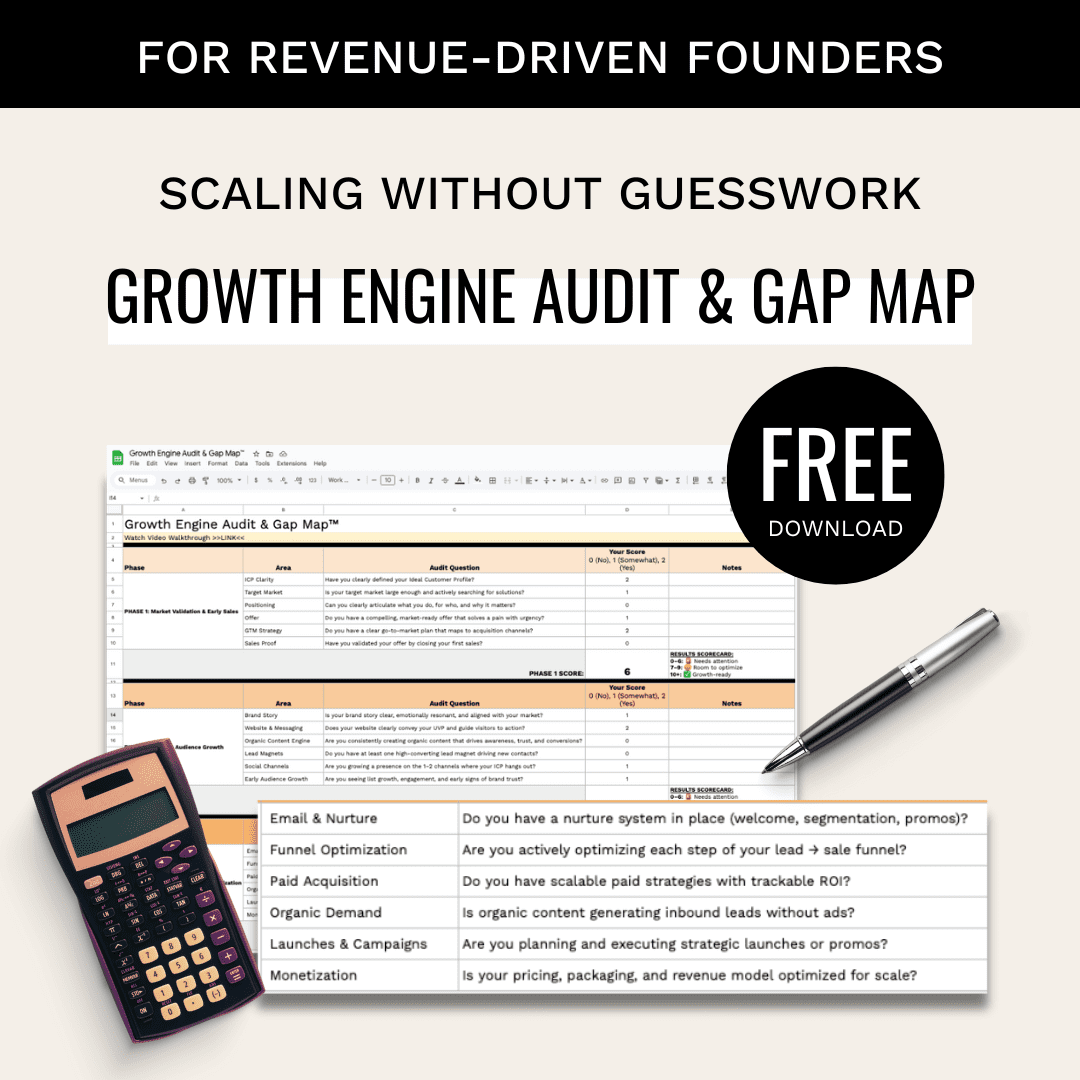A lead qualification framework helps B2B tech companies identify high-value prospects, save time, and improve sales efficiency. This guide breaks it all down:
- Why it matters: Shorter sales cycles, better resource allocation, and higher conversion rates.
- How to start: Review your current process, involve sales and marketing teams, and identify gaps.
- Framework options: Choose from BANT, MEDDIC, or CHAMP based on your sales needs.
- Implementation: Build a scoring system, integrate with your CRM, and train your team.
- Track results: Monitor metrics like conversion rates and customer acquisition costs. Adjust quarterly.
Quick Comparison of Lead Qualification Models
| Framework | Key Focus Areas | Best For | Primary Advantage |
|---|---|---|---|
| BANT | Budget, Authority, Need, Timeline | Enterprise sales | Focuses on financial readiness |
| MEDDIC | Metrics, Economic Buyer, Decision Criteria, Decision Process, Identify Pain, Champion | Complex B2B tech sales | Maps the entire buyer journey |
| CHAMP | Challenges, Authority, Money, Prioritization | Solution selling | Emphasizes customer challenges |
Start by assessing your current process, pick a framework, and tailor it to your business. Then, launch your system, track performance, and refine regularly to maximize results. Let’s dive in!
Common Lead Qualification Frameworks
Step 1: Review Your Current Lead Process
Start by evaluating your existing lead process to identify what works well and where improvements are needed. This sets the foundation for refining your approach in the next steps.
Check Your Lead Criteria
Outline the metrics you currently use to evaluate leads and ensure they align with your business objectives. Focus on these three areas:
- Qualification Metrics
Assess factors like:- Budget and decision-making authority
- Timeline for implementation
- Technical requirements and compatibility
- Company size and industry relevance
- Current solutions in use
- Performance Analysis
Examine:- Conversion rates from lead to opportunity
- Length of your sales cycle
- Trends in customer lifetime value
- How efficiently resources are being used
- Identifying Gaps
Pinpoint areas where your process is falling short. As Lillian Pierson from Data-Mania states:
"Marketing without strategy is a recipe for disaster."
These insights help shape the adjustments you’ll make in Step 2.
Get Sales and Marketing Input
Bring together feedback from both your sales and marketing teams.
Sales Team Feedback
- Conduct interviews with sales reps
- Review win/loss reports to uncover common objections and barriers
- Look for trends in successful deals
Marketing Team Feedback
- Evaluate which lead sources perform best
- Review metrics on content engagement and nurture campaign success
- Check the accuracy of your current lead scoring system
Combining these insights will help you fine-tune your lead process and lay the groundwork for the next phase of development.
Step 2: Pick and Modify Your Framework
Compare Lead Qualification Models
When choosing a lead qualification framework for your B2B tech company, it’s important to weigh the benefits of each option. Below is a comparison of three popular frameworks:
| Framework | Key Focus Areas | Best For | Primary Advantage |
|---|---|---|---|
| BANT | Budget, Authority, Need, Timeline | Enterprise sales | Focuses on financial readiness |
| MEDDIC | Metrics, Economic Buyer, Decision Criteria, Decision Process, Identify Pain, Champion | Complex B2B tech | Maps out the entire buyer journey |
| CHAMP | Challenges, Authority, Money, Prioritization | Solution selling | Emphasizes customer challenges |
Each framework is suited for specific scenarios. For instance, MEDDIC is ideal for complex tech sales involving multiple decision-makers, while CHAMP prioritizes understanding customer pain points before discussing budgets.
Once you’ve selected a framework, tailor it to align with your sales cycle and product specifics.
Adjust the Framework to Your Needs
Using insights from your current lead process, tweak the framework to better fit your business objectives and customer demands.
Aligning with Business Goals
- Adjust criteria to reflect your product’s complexity.
- Modify scoring to account for your sales cycle’s length.
- Incorporate industry-specific qualification questions.
Ensuring Seamless Integration
- Confirm compatibility with your CRM.
- Clearly define the handoff between marketing and sales teams.
- Standardize qualification questions for consistency.
Focusing on Customer Priorities
For B2B tech companies, certain factors often take precedence:
- Assessing technical compatibility.
- Evaluating implementation timelines.
- Understanding integration needs.
- Addressing security compliance.
- Reviewing budget allocation cycles.
Keep your framework adaptable – enterprise strategies often require mid-market adjustments. Regularly monitor performance to fine-tune the process as needed.
"Without execution, strategy is dead."
The next step will guide you on how to effectively implement your customized framework within your organization.
sbb-itb-e8c8399
Step 3: Create and Launch Your Framework
Set Lead Scoring Rules
Define clear criteria to assess the quality of leads. Use a weighted point system based on factors like:
| Criteria Category | Scoring Range | Weight Factor |
|---|---|---|
| Company Size | 1–20 points | 2× |
| Budget Authority | 1–25 points | 3× |
| Technical Fit | 1–15 points | 2.5× |
| Implementation Timeline | 1–20 points | 1.5× |
| Decision-Making Stage | 1–20 points | 2× |
- Hot Lead: 200+ points
- Warm Lead: 150–199 points
- Nurture Lead: 100–149 points
- Cold Lead: Below 100 points
Adjust these ranges to fit your sales cycle, and track conversion rates to fine-tune the system. Once finalized, integrate these scoring rules into your CRM for seamless lead management.
Connect with Your CRM
Make sure your CRM is set up to handle the scoring system by:
- Mapping qualification criteria to specific CRM fields
- Automating scoring triggers
- Setting up workflows to update lead statuses
- Enabling real-time alerts for lead activity
Test the system to confirm data sync, scoring accuracy, status updates, and notifications are all functioning properly. After setup, ensure your team knows how to use these features effectively.
Prepare Your Teams
Train your teams to use the framework with a targeted approach:
- Host workshops to explain the scoring system, framework basics, and CRM functionality.
- Provide clear guides, manuals, and visual aids like flowcharts.
- Schedule regular check-ins during the first month to address challenges and refine the process.
Proper training ensures everyone is aligned and ready to maximize the system’s potential.
Step 4: Track and Improve Results
Measure Performance Metrics
Set up a system to monitor how well your framework is performing. This step ensures your approach keeps up with your business goals.
Focus on these important metrics:
- Lead Quality: How many leads meet your qualification criteria
- Sales Impact: Time taken to close deals
- Cost Efficiency: Customer acquisition cost
- Team Performance: Response times and follow-ups
- Revenue Impact: Conversion rates
Regularly reviewing your CRM can help you spot trends and understand how well your framework is working. Pay close attention to conversion points like Lead-to-MQL, MQL-to-SQL, SQL-to-Opportunity, and Opportunity-to-Close rates.
Update Based on Results
Keep improving your framework with a structured approach:
1. Quarterly Framework Assessment
Every quarter, review your performance data. Look for patterns in scoring criteria, identify lead traits linked to higher close rates, and adjust qualification rules to match market changes.
2. Team Feedback Integration
Hold quarterly meetings to gather input from your team. Use their insights to fine-tune your criteria and processes.
3. Continuous Refinement
Adjust scoring thresholds and CRM workflows based on the latest performance data. Keep tweaking your system to ensure it stays effective.
Conclusion: Next Steps for Your Framework
After setting up your framework, the next phase is about refining and maintaining it. A lead qualification framework isn’t something you set and forget – it needs ongoing attention.
Here’s where to focus:
Regular Performance Reviews
Monitor key metrics like conversion rates and customer acquisition costs every month. Conduct deeper reviews quarterly to identify trends and areas for improvement.
Strategic Alignment
Adapt your framework as your business goals and market conditions change. As Lillian Pierson, founder of Data-Mania, puts it:
"Marketing without strategy is a recipe for disaster."
Customer-Centric Updates
Use customer feedback to keep your Ideal Customer Profile (ICP) up to date. This ensures your framework stays relevant to your audience.
Team Empowerment
Provide your team with clear training materials and practical guides to help them work effectively within the framework.
Technology Integration
Audit your CRM and automation tools every quarter to ensure they’re running smoothly and supporting your goals.
By focusing on these areas, your framework will stay aligned with your business objectives and the evolving market. As emphasized earlier, regular reviews and updates are essential for long-term success.
"Lillian is a KPI-driven, customer-obsessed marketing leader with expertise in growth marketing for tech brands across all industries and business models." [2]
Related Blog Posts
- Collaborative Lead Scoring for B2B Teams
- 5 Best Practices for B2B Marketing Automation Success
- AI Lead Scoring: Basics for B2B Marketing
- Ultimate Guide To VoC Feedback Loop Strategies




